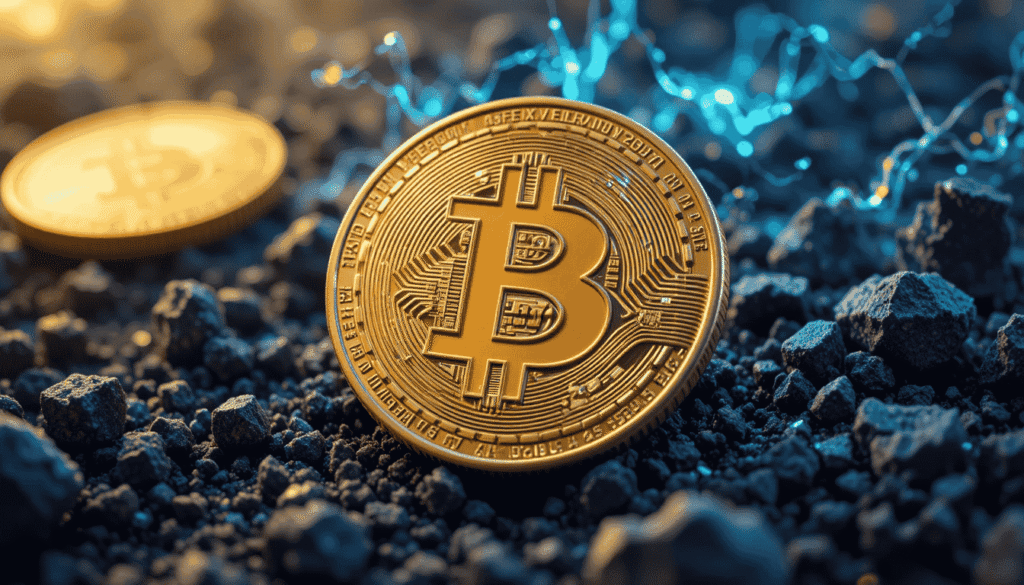The cryptocurrency world has come a long way since Bitcoin’s mysterious launch in 2009. What started as a niche internet experiment is now a global financial asset with over $1 trillion in market capitalization. Yet, the question most people are still asking is:
This question matters more than ever because people are not only trading Bitcoin — they’re integrating it into investment portfolios, using it for cross-border payments, and even considering it as a hedge against inflation. However, with massive volatility, uncertain regulations, and rapid tech developments like ETFs, layer-2 networks, and institutional adoption, navigating the future of Bitcoin requires more than hype. It requires clarity.
Bitcoin in 2025 and Beyond: Where Are We Heading?
Bitcoin’s future is shaped by a mix of technological, economic, and political factors. The coming years could define whether Bitcoin becomes a globally accepted store of value — or remains a speculative asset vulnerable to regulation and scalability limitations.
The Rise of Institutional Interest
Major players like BlackRock, Fidelity, and MicroStrategy are now backing Bitcoin either through ETFs, direct holdings, or financial products. With the SEC approving spot Bitcoin ETFs in 2024, retail and institutional investors now have easier access to Bitcoin without the need to manage wallets or private keys. This is fueling a new wave of capital inflow and giving legitimacy to Bitcoin as a long-term investment class.
Bitcoin’s Role as “Digital Gold”
The narrative that Bitcoin is a store of value — much like gold — is gaining traction. With a fixed supply of 21 million coins and decentralized issuance through mining, Bitcoin appeals to investors concerned about fiat currency inflation and central bank interventions. In countries facing economic instability, such as Argentina or Turkey, Bitcoin adoption has surged due to currency depreciation.
Layer-2 Scaling Solutions (e.g., Lightning Network)
Bitcoin’s biggest technical limitation has been scalability. The base layer handles about 7 transactions per second, which is far less than Visa or Mastercard. However, second-layer solutions like the Lightning Network are now enabling faster, cheaper microtransactions — making Bitcoin more usable for daily payments, not just as a savings vehicle.
Key Products and Projects Shaping Bitcoin’s Future
Let’s look at a few platforms and services influencing how people engage with Bitcoin today — from buying to transacting and holding.
Coinbase
Key Features & Strengths: Simple UI, regulated exchange, offers BTC trading, custody, and staking alternatives
Ideal For: Beginners, U.S. investors, and passive holders
Drawbacks: Higher fees for smaller trades
Compared to Others: Easier to use than Binance, but with fewer trading features
Buy Link: Coinbase Official Site
Binance
Key Features & Strengths: Advanced trading tools, futures, global access
Ideal For: Experienced traders, global users
Drawbacks: Regulatory scrutiny in multiple countries
Compared to Others: Higher liquidity than most exchanges
Buy Link: Binance Official Site
Cash App (by Block Inc.)
Key Features & Strengths: Instant BTC buying in a mobile-first app
Ideal For: U.S. mobile users, Gen Z
Drawbacks: Limited to basic features
Compared to Others: More accessible but lacks full control like on-chain wallets
Buy Link: Cash App Official Site
Ledger Nano X
Key Features & Strengths: Cold storage, secure offline private key management
Ideal For: Long-term HODLers, security-conscious users
Drawbacks: Requires setup, not ideal for frequent traders
Compared to Others: More secure than software wallets
Buy Link: Ledger Nano X
Premium Comparison Table: Bitcoin Platforms & Tools
| Brand / Product Name | Key Specs / Highlights | Price Range | Best For | Pros | Cons | Buy Link |
|---|---|---|---|---|---|---|
| Coinbase | Regulated exchange, simple UI | 0.5%–1.5% fees | New investors | Easy onboarding, U.S. licensed | Higher fees than Binance | Coinbase |
| Binance | Advanced trading, BTC futures, wide support | 0.1%–0.5% fees | Global pro traders | Deep liquidity, wide pair options | Regulatory risks in some regions | Binance |
| Cash App | Buy/sell BTC from phone | No trading fees | Gen Z, U.S. casual use | Instant buy/sell, clean mobile experience | No advanced features | Cash App |
| Ledger Nano X | Offline cold wallet, Bluetooth support | ₹9,000–₹14,000 | HODLers & BTC whales | Top security, portable hardware | Requires setup, not for active trading | Ledger |
How to Choose the Best Bitcoin Platform or Strategy
1. Budget & Investment Goal:
If you’re investing small amounts occasionally, a mobile-first platform like Cash App or a trusted exchange like Coinbase is sufficient. If you’re allocating large sums or day trading, opt for Binance or use a hardware wallet like Ledger.
2. Long-Term vs Short-Term Use:
For long-term holders, security is the top priority. Consider cold storage solutions or custodial services with insurance. Traders should prioritize liquidity, speed, and tools.
3. Geography & Regulation:
Some exchanges are not available in all countries. Always check local laws, especially since Bitcoin regulation is tightening globally.
4. Risk Appetite:
Bitcoin remains volatile. Only invest money you can afford to lose. Consider dollar-cost averaging (DCA) to reduce timing risk.
5. Utility & Ecosystem:
If you’re planning to use Bitcoin for payments, look for platforms or wallets that support Lightning Network for fast, low-fee transactions.

Conclusion: So, What is Bitcoin Future Really?
The future of Bitcoin is neither fully predictable nor purely speculative — it’s layered. From institutional adoption and regulatory debates to technical innovation like the Lightning Network and ETFs, Bitcoin is maturing into more than just a digital asset. It’s becoming infrastructure.
If you’re a long-term investor looking for a decentralized hedge, Bitcoin could still be worth the risk — but you must understand the platform you use and the storage methods you choose. If you’re trading, make sure your tools match your strategy and that you understand market volatility.
In simple terms, What is Bitcoin Future? It’s the evolution from digital currency to digital value infrastructure — but your role in it depends on how well-informed and secure your strategy is.
Read Also: iPhone 16 Pro vs Samsung Galaxy S25 Ultra: Which Flagship Is Worth Your Money?


